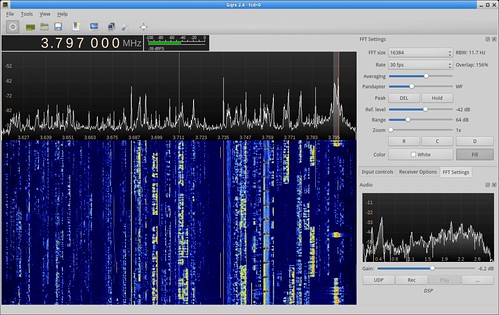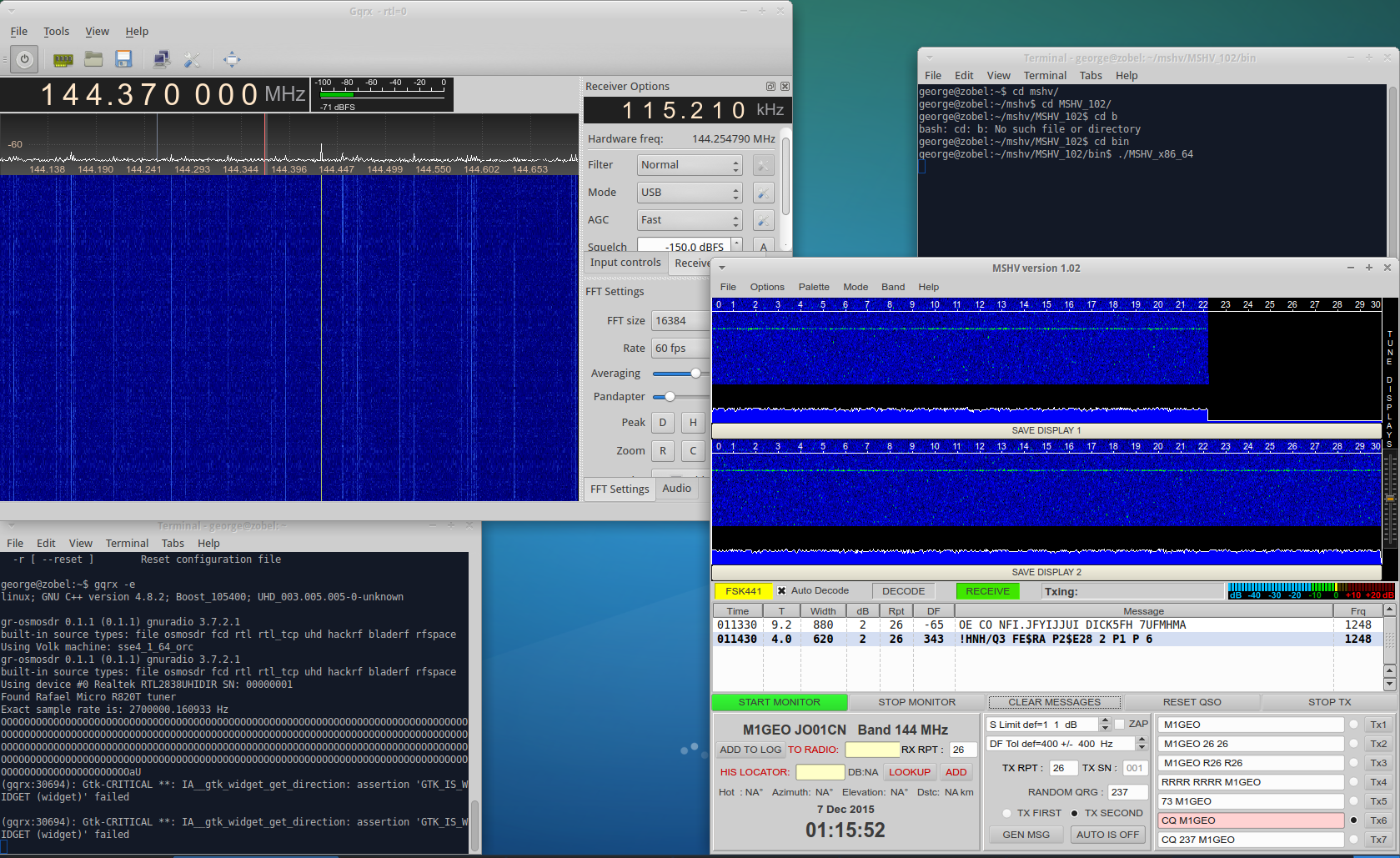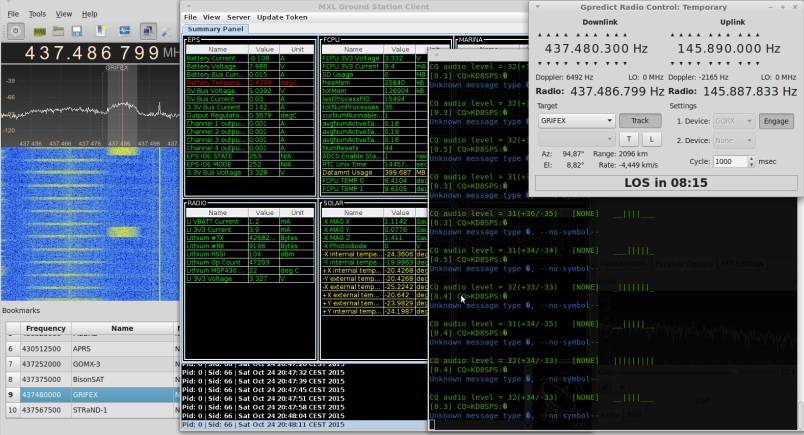One year after the 2.3.2 release, Gqrx 2.4 is now available for download. This release includes both new features, important bug-fixes as well as improvements of existing functionality.
New features
- Bookmarks.
- FM RDS decoder using gr-rds.
- Frequency tooltips on the FFT area (disabled on Mac).
- Filter shape selector (soft, normal, sharp).
- Slider to aid zooming on the frequency and dB axes.
- RFSpace Cloud-IQ support (still work in progress).
- OIRT stereo decoder (Daniil Cherednik).
- Input decimator.
Bug fixes
- Prevent crash due to device errors while starting the application.
- Use hardware frequency in IQ file names.
- FFT averaging (it can now be disabled).
- “Could not resolve pattern10600” error messages in the terminal.
- Antenna selection error with USRP B210 (Ethan Trewhitt).
- LNB LO value not updated in I/O config dialog.
- Initial gain of rtlsdr devices is no longer 0 dB.
- DSP freeze when setting FM de-emphasis time constant to 0.
- Use correct main category in desktop entry file.
Improvements
- Support up to 1M point FFT.
- Fractional PPM correction.
- AGC performance.
- FFT performance.
- Right click on frequency digit to clear digits.
- Robustness against malformed remote control commands.
Ubuntu Packages
Starting with this release, we have a new PPA that contains only Gqrx binaries and uses MyriadRF PPAs for GNU Radio and SDR driver packages. I realize this is inconvenient for existing PPA users; however, this offloads some of the packaging work from me and will ensure more up to date GNU Radio packages for Ubuntu users in the future.
Please make sure you have the previous PPA disabled and old, obsolete packages removed before using the new PPA as instructed on the Ubuntu Install page. Feel free to contact us if you need help with the PPA transition.
Mac OS X binaries
As always, there is an up to date Gqrx package in Macports. There is now also an app bundle available from GitHub or SourceForge. The bundle was built on Mac OS X El Capitan and contains all required third part libraries, as well as the command line utilities that come with the Airspy, RTL-SDR, Hackrf and Bladerf driver libraries. See the included README for details.
Installing from source
The source code can be downloaded from GitHub or SourceForge. Starting with this release, gqrx can also be compiled using cmake, see the README file for details. Building with qmake is still available and will not disappear any time soon, so feel free to use either method.
Have fun!


